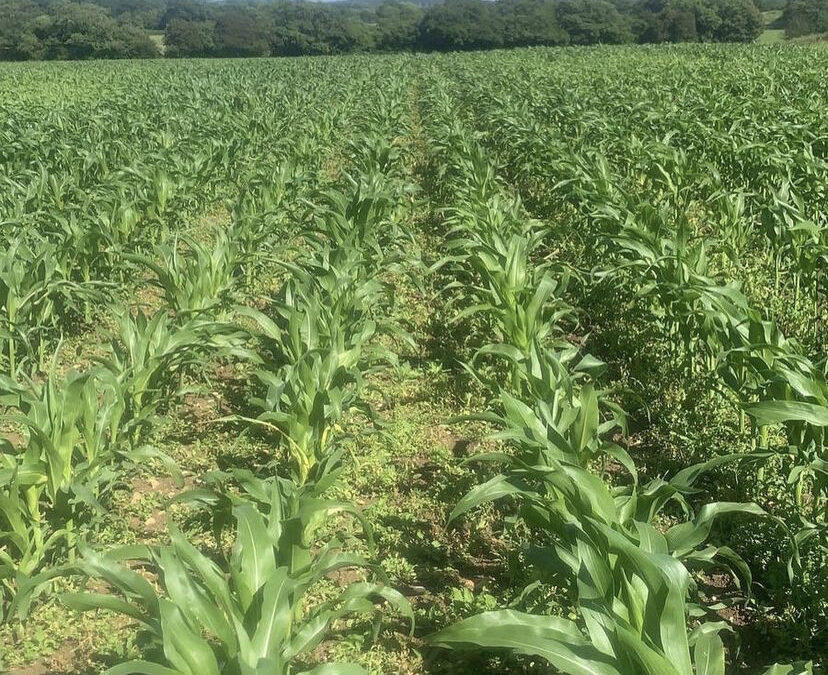In the second instalment of our series Maize Growing: the Core Skills we turn to the twin themes of weed control and fertilizer application – as important as each other when it comes to the achievement of consistent, high yields.
Weed control
Weeds compete with crops for the limited resources of the field: light, water and nutrients. Maize in its earliest stages is particularly vulnerable to the ill effects of this competition.
The application of herbicides is therefore essential if the crop’s potential – both in terms of yield and of plant quality – is going to be fully realised.
Pre-emergence broad spectrum herbicides may be sprayed onto the newly drilled field in order to prevent the germination of weeds around the maize – which thus gets a head start. Pre-emergence weed control is especially appropriate for fields that are hard to weed or that have a high presence of grasses.
It may be that pre-emergence treatment is enough, or at least that a later spraying need not then be so heavy. But application of a post-emergence herbicide is often required to prevent a resurgence of weeds interfering with the development of the new crop – and if this is the case, then the earlier the better. Every week’s delay between emergence and the six-week stage, during which time the weeds will be becoming more and more competitive, can cost the farmer several eventual tons per hectare of fresh crop.
Fertilizer
Of the seventeen chemical elements that all plants require for growth there are three – ‘the big three’ – that it is essential to replenish regularly. These are nitrogen (for protein, the fundamental builder of growth); phosphorus (important for photosynthesis and healthy development) and potassium (for hardiness and a plant’s ability to fend off disease).
Maize has the following requirements:
- 180kg / ha potash (potassium)
- 80kg / ha phosphate (phosphorus)
- 150kg / ha nitrogen
These needs will vary according to the state of the soil, and can in part be addressed through the application of slurry or farmyard manure; the rest needs to be made up with fertilizer. Soil and manure samples can be sent off for analysis to give an ideal picture of what is needed.
Potassium and phosphorus requirements may be partly or completely met with manure, which will also supply some of the needed nitrogen. Having nutrients in the seed-bed is important for crop establishment and rapid growth.
However, maize absorbs almost no nitrogen during the first month in the ground. Therefore, to prevent too much nitrogen sitting around in the soil and getting lost, keep about 35% back for a second application while the crop is developing but not yet mature (around the 7-8 leaf stage).
Be mindful that nitrogen can build up over time when maize is cultivated continuously, and excess nitrogen can pollute the environment (for example through leaching). Autumn-sown cover crops – which you may be considering anyway if you are using an early variety maize – can be an excellent way of regulating soil nitrogen content.
Besides the big three nutrients, there are a few trace elements also important for plant growth – notably manganese, magnesium and zinc – whose presence in the soil it is worth keeping an eye on to ensure the crop is getting optimum nutrition.
And do be aware of the soil’s pH level: if it is 6 or below, it should be neutralised. The health of maize roots can be impaired by acidity in the soil, which limits nutrient uptake.
A note on pests and diseases –
Pests and diseases can cause appreciable problems for maize – both in the seed-bed and for growing plants. Treatment options are currently evolving away from forms of chemical protection towards more sustainable strategies. Please don’t hesitate to contact us for the latest advice.

